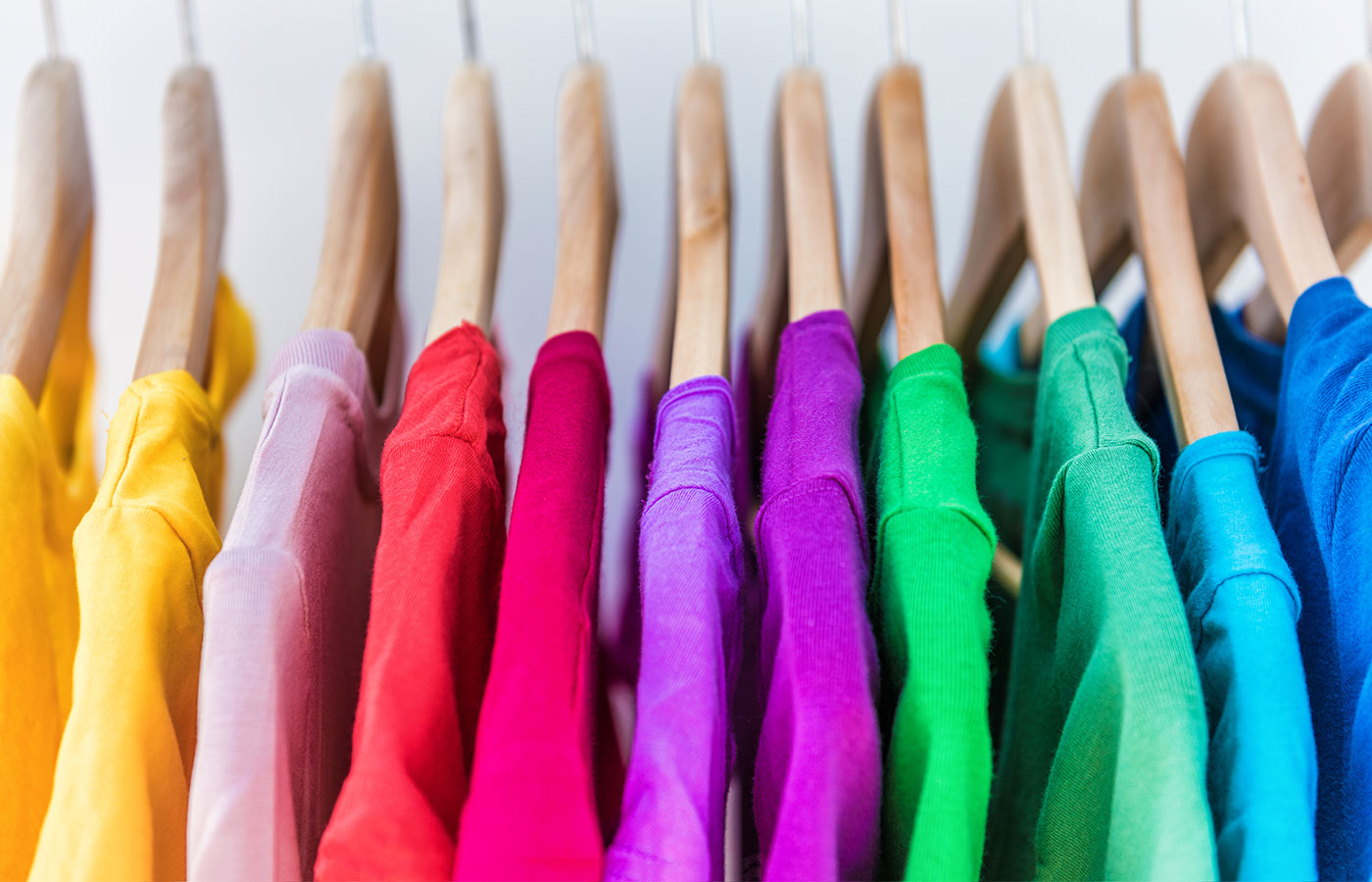How Branded Clothing Enhances Your Style Through Thoughtful Fabric Use
How Branded Clothing Enhances Your Style Through Thoughtful Fabric Use
Blog Article
Recognizing Clothes: The Significance of Material Selections in Your Wardrobe
The option of textile in garments plays a crucial function in both visual appeals and functionality. Various materials supply differing degrees of convenience, breathability, and durability, straight influencing the user's experience. Recognizing these nuances can enhance one's closet significantly. Lots of neglect how these options can impact not just personal design, but additionally sustainability. What material choices could redefine your wardrobe and align it with both design and obligation?
The Role of Fabric in Style and Functionality

Common Textile Kinds and Their Characteristics
When choosing garments, understanding the features of typical textile types is vital for making educated options. Cotton, a widely-used natural fiber, is recognized for its versatility, breathability, and soft qualities, making it suitable for casual wear and day-to-day garments. Bed linen, one more all-natural alternative, boasts excellent moisture-wicking properties and a distinctive appearance, perfect for warm climates.Wool, often preferred for its warmth and toughness, differs in fineness; merino wool is soft against the skin, while coarser types are used for outerwear. Artificial materials like polyester and nylon use durability and resistance to creases, making them popular for activewear and traveling garments. Blends, which combine all-natural and synthetic fibers, can improve performance while keeping convenience. By identifying these material characteristics, people can select clothes that straightens with their way of living and visual choices.
Breathability and Comfort: Picking the Right Fabrics for Various Environments
Selecting the appropriate materials for various environments can significantly improve convenience and overall wearability. Breathable materials are important in hot climates, as they enable air circulation and wetness evaporation. Fabrics such as cotton, linen, and moisture-wicking synthetics effectively attract sweat far from the body, maintaining the wearer cool and completely dry. Conversely, in cooler environments, thicker materials like wool or fleece provide insulation while preserving breathability, guaranteeing warmth without overheating.Additionally, the option of material weight plays an essential duty; lightweight textiles are more suitable for summer, whereas heavier options are suited for wintertime wear. Understanding the unique buildings of each fabric allows individuals to clothe suitably for differing weather conditions. Eventually, selecting comfortable and breathable materials customized to details environments can greatly improve day-to-day convenience and boost the overall experience of using clothing.
Sturdiness and Treatment: How Fabric Impacts Longevity of Your Closet
Choosing the appropriate products can considerably impact the durability and care needs of a wardrobe. Fabrics such as cotton and polyester are known for their resilience and convenience of upkeep, making them excellent for day-to-day wear. On the other hand, delicate products like silk and lace need even more careful handling and specialized cleaning approaches, which can increase the time and effort required for care. Branded Clothing.Durability is also influenced by the material's weave and coating; firmly woven fabrics tend to resist damage much better than loosely woven options. Furthermore, synthetic blends often give enhanced durability, integrating the finest qualities of multiple fibers.Understanding the care guidelines for each textile is necessary, as improper drying or cleaning can bring about this link premature wear. Eventually, choosing resilient products can bring about a longer-lasting wardrobe, lowering the frequency of substitutes and adding to a more sustainable fashion selection
The Influence of Material on Fit and Silhouette

Sustainable Fabric Options: Making Eco-Friendly Decisions
The impact of material prolongs past fit and shape to incorporate environmental variables, motivating a growing rate of interest in sustainable material options. Eco-friendly textiles, such as organic cotton, hemp, and Tencel, are gaining traction among customers who focus on sustainability in their wardrobes. These products are usually created with fewer chemicals and water, decreasing their environmental footprint.Additionally, recycled fabrics, made from post-consumer waste, provide an innovative remedy to the fabric market's pollution trouble. Brands progressively accept openness in their sourcing techniques, enabling customers to make educated decisions regarding their purchases.Choosing sustainable materials not only sustains moral methods but additionally encourages the style industry to take on more liable manufacturing techniques. As understanding of environmental concerns rises, people are urged to assess the long-lasting impact of their fabric selections, fostering an activity in the direction of an extra lasting and environmentally aware strategy to style.
Raising Design: Just How Textile Can Change an Outfit
While numerous may concentrate on color and cut when choosing an attire, the option of textile plays a vital role in elevating design and improving general appearance. Different products share unique state of minds and messages; as an example, silk radiates high-end and refinement, while denim offers a laid-back, kicked back ambiance. The texture and drape of a textile can drastically alter the shape, with organized textiles giving a polished look and softer ones developing an extra fluid, loosened up aesthetic.Moreover, the weight of the textile affects wearability throughout seasons. Light-weight textiles like bed linen and cotton are perfect for summer, while larger products such as wool and velour supply heat and elegance in colder look these up months. Recognizing fabric properties, such as breathability and stretch, likewise equips people to make educated choices that boost comfort without discover this info here compromising design. Eventually, the right material can transform an outfit from common to extraordinary, making it a vital consideration in any kind of closet.
Frequently Asked Questions
Exactly how Do I Identify the Textile Web Content of My Garments?
To recognize textile material, one can analyze treatment labels, conduct melt examinations for fiber identification, or consult fabric examples. These methods help set apart products, ensuring notified selections for garments care and maintenance in everyday wear.
Can Fabric Selection Affect My State Of Mind or Confidence?
Textile option can substantially affect an individual's mood and self-confidence. Branded Clothing. Particular products might evoke sensations of comfort or style, while others can really feel uncomplimentary or restrictive, eventually affecting self-perception and psychological wellness throughout the day
What Fabrics Are Ideal for Sensitive Skin?
For people with delicate skin, natural textiles like bamboo, linen, and cotton are frequently suggested. These materials are breathable, hypoallergenic, and less likely to cause irritation, making them appropriate options for convenience and skin health.
Exactly how Do I Properly Clean and Care for Different Fabrics?
To correctly wash and care for various materials, one have to take into consideration each material's particular demands, including temperature level settings, detergents, and drying out approaches, making sure durability and keeping the textile's original qualities for excellent usage.
Are There Particular Fabrics for Athletic or Efficiency Wear?
Athletic or efficiency wear frequently makes use of textiles such as nylon, spandex, and polyester. These products are designed for moisture-wicking, breathability, and adaptability, enhancing movement and comfort throughout exercises while giving longevity and assistance. Alternatively, in chillier climates, thicker textiles like woollen or fleece offer insulation while retaining breathability, making certain warmth without overheating.Additionally, the selection of fabric weight plays an important role; light-weight fabrics are preferable for summer, whereas heavier options are suited for winter season wear. In contrast, fragile products like silk and lace need more mindful handling and specialized cleaning techniques, which can boost the time and initiative needed for care.Durability is also affected by the textile's weave and finish; snugly woven materials have a tendency to resist wear and tear better than loosely woven options. In comparison, rigid materials can restrict movement but provide a classic, refined look.Moreover, the density and structure of the fabric can affect the aesthetic assumption of body shape. The influence of material prolongs past fit and shape to incorporate environmental elements, triggering an expanding interest in lasting textile options. The appearance and drape of a textile can drastically change the shape, with structured textiles offering a polished appearance and softer ones creating an extra fluid, kicked back aesthetic.Moreover, the weight of the material influences wearability throughout seasons.
Report this page